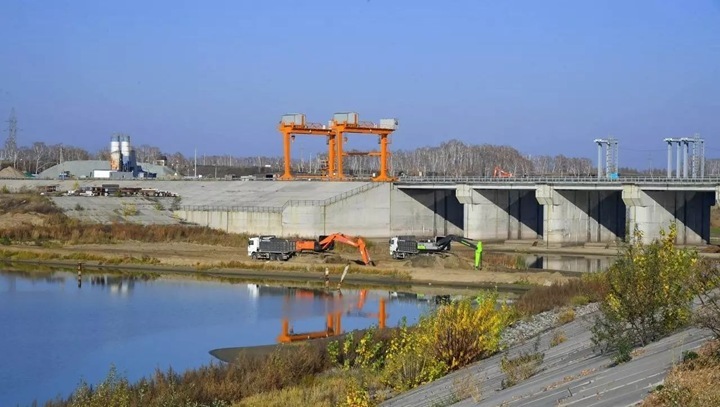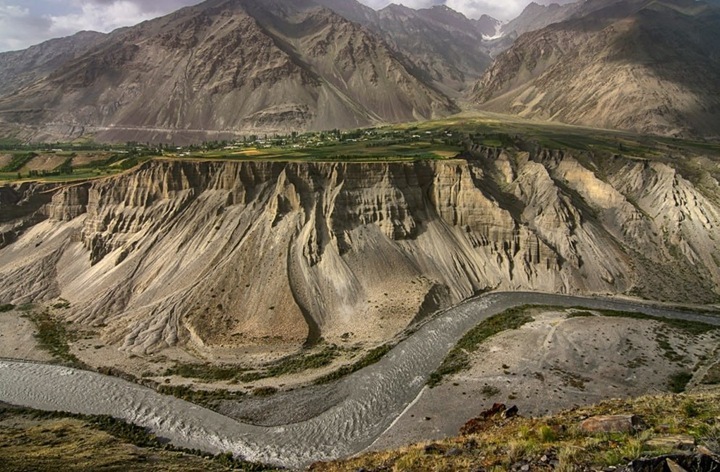Environmentalists told about the impact on the nature of the hydroelectric complex on the Irtysh
The Krasnogorsk hydroelectric dam on the transboundary Irtysh River in the Omsk region has been built since 2011. The construction was frozen, and then resumed again. No one has yet named the exact deadlines for the delivery of the object. But even before commissioning, environmentalists are worried that the operation of the waterworks may cause serious harm to the ecosystem.

Krasnogorsk hydroelectric complex — Omsk long-term construction, the construction of which was frozen for several years. The dam will have to regulate the water level in the Irtysh, which will ensure navigation, year-round water intake at no extra cost and will help keep the supporting parts of bridges and coastal structures in optimal condition. The waterworks began to be built in 2011. Two years later, the construction was stopped, and in 2022 it was resumed. No one has yet named the exact deadlines for the delivery of the object. But even before commissioning, environmentalists are worried that the operation of the waterworks may cause serious harm to the ecosystem.
What’s wrong with the location of the waterworks
Omsk ecologist and member of the Civic Chamber of the Russian Federation Vladimir Lifantyev said that the place for the construction of the Krasnogorsk hydroelectric complex was initially chosen incorrectly.
“There is such a thing as the power of Coriolis. Our planet always rotates in one direction. In the northern hemisphere of our planet, all rivers have a steep right bank, and the left one is more gentle. Our hydroelectric power plant is located on the left side. And above it are two sections of the CHP-4 ash dump. There are about 25-30 million tons of ash there,” the ecologist said.
The ecologist explained that when the hydroelectric plant is completed, the entire remaining stream of water will be allowed to flow along the right side of the riverbed. The profile of the river will decrease by half, and the current, respectively, will double.
“30 million tons of ash are about 20 meters above the river level. The dam exists in the form of a landslide. What is the probability that after the construction of the waterworks, this ash dump will simply be washed away? When all this fine dust gets into the water, the whole hydrobiont will die by 300 kilometers. This ash has such a fraction and buoyancy that it will clog all the airways,” Vladimir Lifantyev believes.
Stages of construction
The waterworks began to be built in 2011 and planned to be completed by 2016 — by the 300th anniversary of Omsk. However, due to lack of funds, the facility was frozen. In 2022, the construction site was revived.
“The construction of the facility has been frozen since 2014.Now life is boiling here. As part of the implementation of the Russian Water Strategy, the region was allocated 4 billion rubles for this project. The volume of co—financing from the regional treasury amounted to 600 million rubles,” ex-governor Alexander Burkov reported in November 2022.
The contract with Moscow-based Mezhregionstroy LLC was concluded in the amount of 4.6 billion rubles, but in 2024 the cost of work was increased by almost 800 million. The price increase was due to a significant increase in the cost of building materials, which “could not have been foreseen when concluding the contract.”
The full first stage of construction, as previously reported by Gorod55, should be completed by the end of 2025. In parallel with this, work is also underway on the design of the second stage of the construction of the hydroelectric complex. The contract worth 613 million rubles went to the St. Petersburg joint-stock company Lengiprechtrans.
In 2023, the ex-governor of the Omsk region, Leonid Polezhaev, accused all heads of regions who worked after him of delaying the construction of the waterworks. The current governor, Vitaliy Khotsenko, last mentioned in the media about the construction of the dam in July 2024, which hints at uncertainty with the timing of the project.
About the regulation of the Irtysh
Omsk ecologist, professor of OMGUPS Sergey Kostarev participated in the justification of the modes of use of the waterworks in the zero years.
“You can’t build a dam. This is proven. The fact is that the problem with water content in summer is due to the fact that the Irtysh has been regulated since the early 60s. Its level is determined by the release of water from reservoirs in Kazakhstan. Recently there was information that two dams are standing, and the third, which should accumulate water, is unfinished. Power plants are located at the dam in Kazakhstan. More electricity is needed in winter. Accordingly, the reset is carried out,” the professor explained.
At the end of 2024, the level of the Irtysh river rose sharply. In the Cherlak district, in the village of Zaton, a high-alert mode was introduced due to the threat of flooding. One of the versions of the water level change is the discharge at the Shulbinskaya dam.
On the territory of neighboring Kazakhstan, the Irtysh cascade of dams has been erected on the Irtysh, including Bukhtarma, Ust-Kamenogorsk and Shulbinsk dams. It is also planned to build the Semipalatinsk hydroelectric power station with a capacity of up to 300 MW by 2030.
“It turns out a paradox. In winter, when we don’t really need water in the Irtysh, the level rises, but not in spring and summer. If you put a dam, then in fact it will not work. In the spring it will not hold water, and in the summer there is nowhere to take water. But the speed of the river will decrease and the water will rot. So, the dam will need to be opened so that the water flows further,” added Sergey Kostarev.
***
According to environmentalists, it turns out that the construction of the Krasnogorsk hydroelectric complex can not only harm the environment, but is also unprofitable from an economic point of view. In November, deputies of the Legislative Assembly of the Omsk region pledged 650 million rubles from the regional budget for 2025 for the construction of the Krasnogorsk hydroelectric complex. For comparison: This is 4.5 times more than they plan to spend “regional money” on the construction of another long—term facility – Fedorovka airport.
City55


